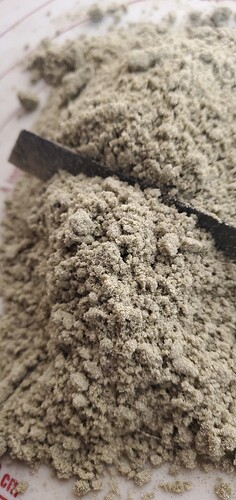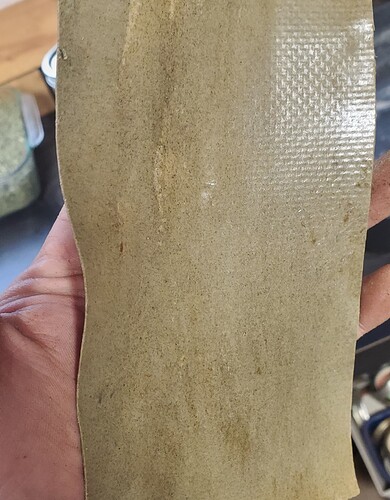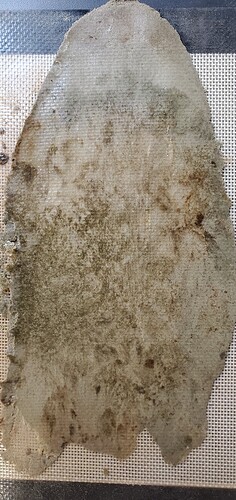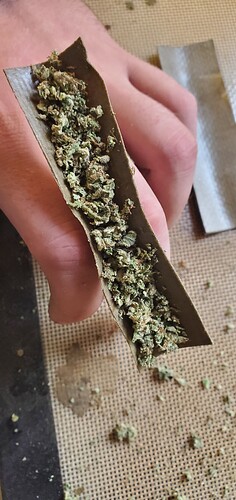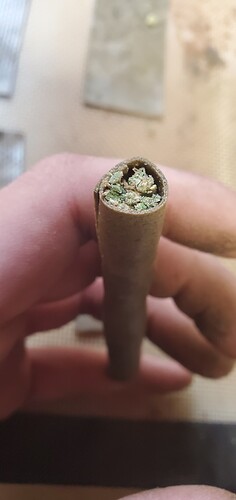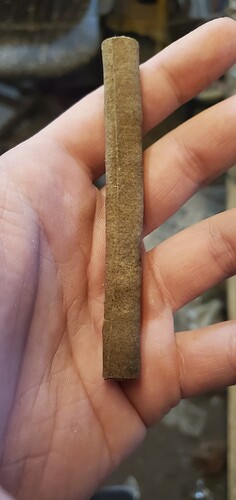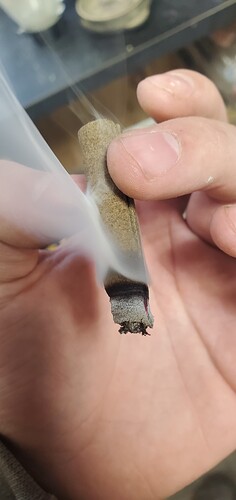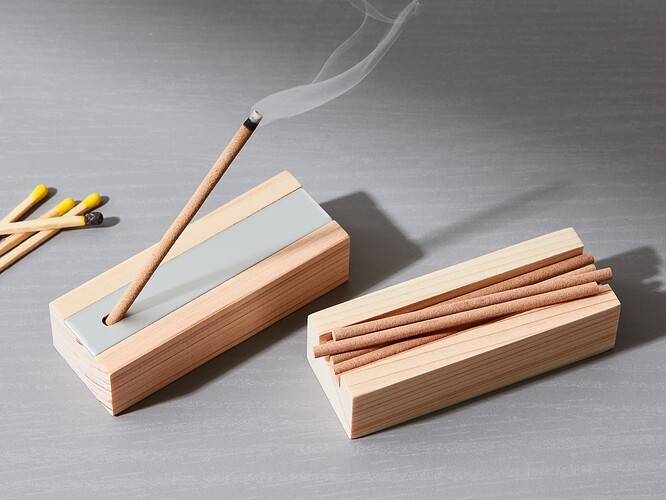I need to clarify as something has been misinterpreted.
When this was attempted with trichomes collected from spent material the bonding WOULD NOT occur. No matter what i tried to do. I even applied hundreds of degrees of heat and literal tons of pressure to spent trichomes and the resulting product smelt like burnt coffee grounds… it did press it into a “puck” but this puck fell apart… this was only done as an extreme last ditch “send it” approach… thought maybe i could “cook” them together but nope… still wouldn’t bind… maybe someone else can figure it out… i can see using the whole spent-plant for “hempcrete”… sure, but not the trichomes alone from spent material.
Thus leading to my conclusion that in order to bond trichomes they must be ruptured and you can only rupture trichomes when they HAVE NOT underwent a solvent extraction.
I used fresh unadultered cannabis for the pictures of the experiment posted, with the only addition being water and then i tested the ability to bond them, using heat, pressure and moisture, independently at first and eventually all at once.
Heat or pressure or water alone didn’t achieve the desired result nor did heat and pressure, it appears the trick was the trichomes had to be moistened first, slightly heated… I’m talking luke warm… and then gently pressed between silicone… shaped and heated again to cure… i didn’t heat the trichomes directly either, i would heat only the silicone… it was relatively simple… but I regretfully spent many many hours heating and pressing dry trichomes.
I’m not exactly sure why the addition of water was a key factor nor do i understand the science behind it but without a single doubt the bonding was significantly increased in the presence of moisture which is truly a “hmmmmmmm” moment for me as for my understanding most of the resinous components inside a trichome don’t get along with water very well, yet they refused to form a strong bond in the absence of it. Strange.
The next challenge after establishing a strong bond was figuring out how to get the mositure out while maintaining the bond… because of course i wanted to try smoking it and you can’t smoke a wet noodle… i tried… freeze drying didn’t work, air drying didn’t work… but the heated dehydrator worked… the hardening appears to be heat activated. It only takes around 15-20 minutes for the wet trichomes to harden in the dehydrator.
Room temperature air dry - returns to dust pile.
Heated(70°c) air dry - maintains bonds!?
The sheet was cut to size and shaped into tubes when wet and essentially underwent a heat cure to be dried… the heat cure is when they found their strength. Prior to heat and pressure, it’s comparable to clay/play dough and then comparable to the feeling and texture of vulcanized rubber once heated and pressed and then feels very similar to a cinnamon stick when cured…
I was able to remove the moisture while maintaining the bond… this work was done with a variety of highly potent THC strains using primarily trichomes, i have no idea if hemp trichomes could produce the same result.
Thank you for acknowledging the merit to my work, even if it is a partial rediscovery unrelated to what i was doing, the acknowledgment that i have indeed done “something” is still appreciated greatly.
Using more trichomes and/or only the trichomes could be the basis of a strong future hempcrete… bit unlikely as two plants will never grow the same… so unless the margin for inconsistency in the trichomes composition is very wide for a such a product it’s unlikely a trichome based or enriched “hempcrete” will ever arise… i could definitely see what I’ve made being used like primitive stucco or plaster though… when you get the perfect mixture it’s like “drywall mud”… it could definitely clad onto a wall…
Rediscovery is genuinely possible here as most of the “fucking around” i did was relatively primitive and now you have me wondering if this could be taken further with the addition of chemicals… i was making things that could be safely consumed… i wonder how far this idea could go if my motive changed… if consumption was no longer a factor…
Anyways… maybe another project… but for now… I’ll enjoy my hard work… reveling in my glory that in a world of so many… i was the first to perfect this method.
